Picture power: Eight photographers on their best image of 2015
- Published
As 2015 draws to a close, photographers working for Reuters tell the story behind a number of their most powerful pictures.

Bernadette Szabo on the Syrian refugee crisis
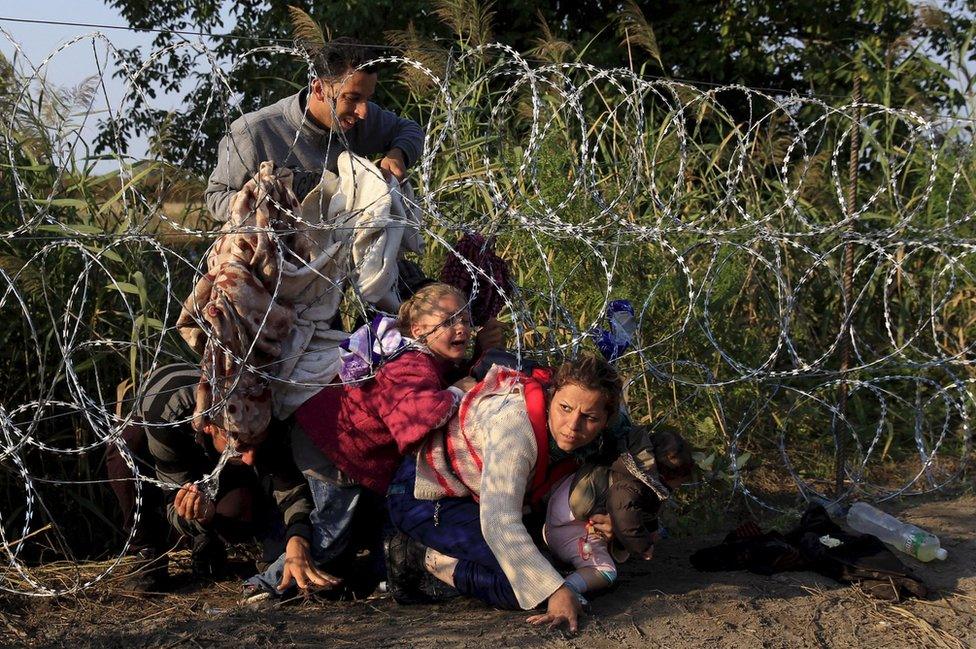
Bernadett Szabo was assigned to document the movement of refugees from Syria making their way to Europe. Her picture was taken on the border between Hungary and Serbia as people attempted to make their way through newly-laid razor wire while avoiding the police.
"Dozens of other photographers and I paced the fence, some way from the rail tracks. Among the shrubs we could make out the contours of migrants waiting for the right moment. Everyone watched everyone else. We watched the refugees, who watched the police, who watched us. It was like an elaborate board game. It was more than just waiting. The people on the other side of the fence filled the atmosphere with strange, unspeakable tension.
"This family decided they had waited enough. They started for the fence. Aware of the stakes, they lifted the razor wire, looked around, then went for it. Once across they vanished in the woods. I never saw them again.
"Photographing the migrants was the ultimate test of staying out of the story: observe keenly, wait, shoot. Don't cut the wire, don't invite the refugees in, don't alert the police.
"There was little human contact with the thousands of refugees scaling the fence. You learnt nothing about them. They came and went. But those who walked along the tracks stopped and talked. They accepted water or the odd chocolate bar. They even shared stories - stories that will haunt me forever. There is no way to shake the emotional impact. Once I put the camera down and had time to reflect, it all came back. You have to let the story wash through you to remain human."

Siphiwe Sibeko in South Africa
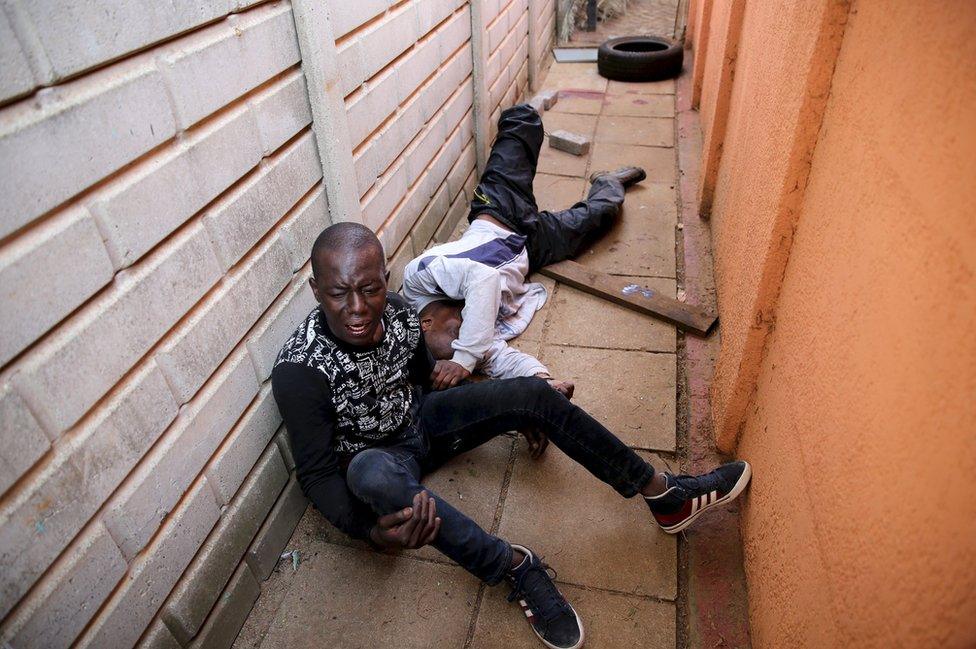
"Some stories have more impact on me than others. This one in my neighbourhood in Johannesburg is a case in point. I got a message that my neighbours' house was being broken into and they needed help. When other neighbours and I arrived we found one man lying inside the house bleeding. He later confessed that the other robbers had fled and they might still be in the area.
"There had been an increase in robberies locally. A few weeks earlier my car was broken into and all of my photographic equipment stolen in broad daylight.
"Police patrolling in the neighbourhood helped to apprehend a second suspect. They were both handcuffed outside the house and as we waited there for the arresting officers to arrive, I got out my camera and took a few pictures of the suspects handcuffed together. The man who had sustained the gunshot wound was writhing in pain. Both men were crying and pleading with the community not to hit or attack them.
"People were angry because burglaries happen all the time even during broad daylight. The other suspects in this break-in have not been found to this day. Although I was both angry and shaken as this robbery took place next to my home, I was able to keep calm as I remembered my responsibilities as a photojournalist not to get carried away by anger and emotions. I have learned always to be calm and have my camera with me at all times."

Soe Zeya in Myanmar
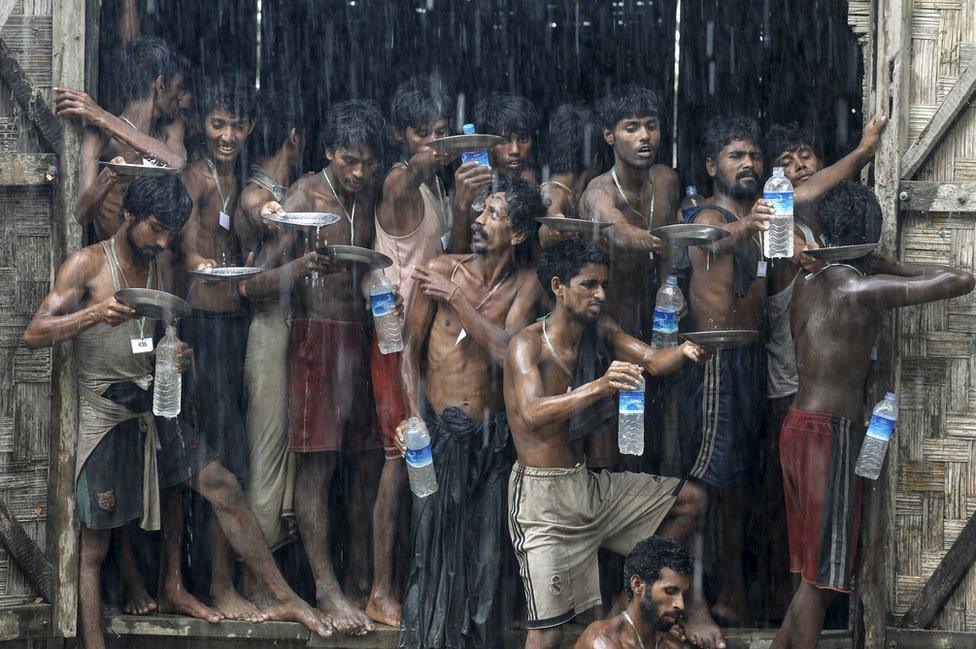
Soe Zeya's picture shows a group of Rohingya and Bangladeshi migrants who had been rescued from a boat carrying more than 730 people off Myanmar's southern coast.
"They had arrived the day before, but while the women, children and some men had already been moved, these men were left behind. There was no sign of the UN refugee agency UNHCR or foreign aid agencies. Just moments before this shot, the sky opened and the monsoon rains started coming down. The men were jostling with each other for space to catch water in their bottles and plates.
"The authorities were hesitant to grant us access at first, but as the morning wore on and the rains started, we were able to enter and start photographing and speaking to migrants. Just after taking this photo, the men were loaded into buses and trucks and driven to a camp where international aid agencies were waiting.
"I have worked on long and difficult assignments where I have gone days without a proper shower. But for these people it had been months without enough water. Everyone was dirty and had likely washed little while at sea. I could see just how meaningful it was for them to suddenly have a chance to drink and clean themselves with whatever small amount of water they could capture."

Stephane Mahe in Paris after the attack on the offices of Charlie Hebdo
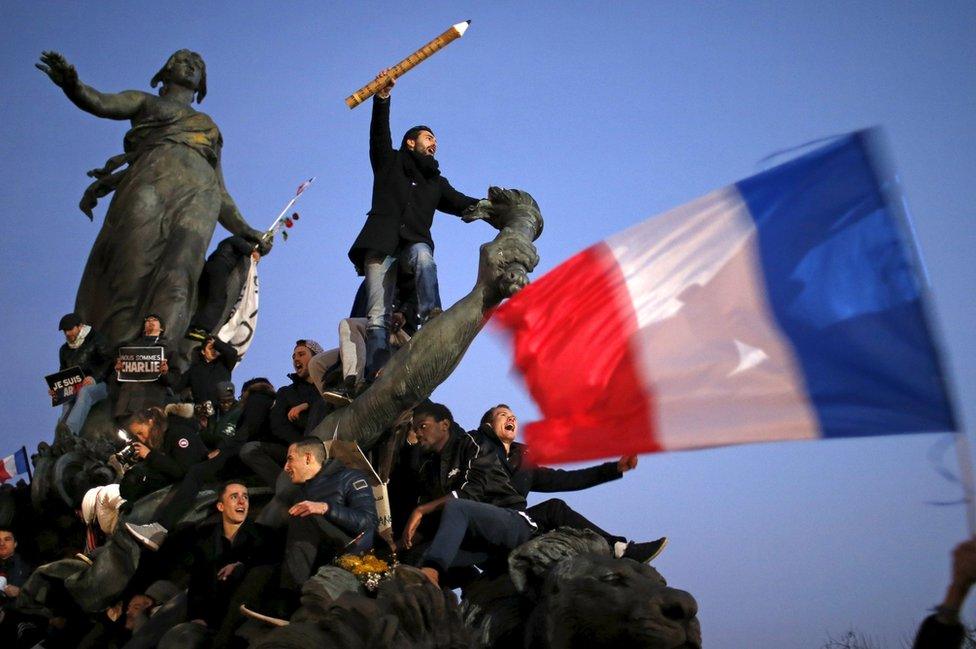
Stephane Mahe was covering the arrival of the heads of state at the start of the solidarity march in Paris following the massacre at the offices of satirical magazine Charlie Hebdo. He then made his way through the streets to the Place de la Nation.
"It was the end of the day and the light was soft as I walked around the statue, the Triumph of the Republic, looking for a picture with the French flag and a pencil. I was fortunate that everything fell into my frame and I was able to combine dramatic light, a dynamic gesture with the giant pencil and an interesting group around the statue.
"People online have called it The Pencil Guiding the People, in reference to Eugene Delacroix's famous painting Liberty Guiding the People.
"I find the comparison really interesting and it was a historic march, but I am surprised that my photograph has become so symbolic of the day."

Bassam Khabieh in Damascus, Syria
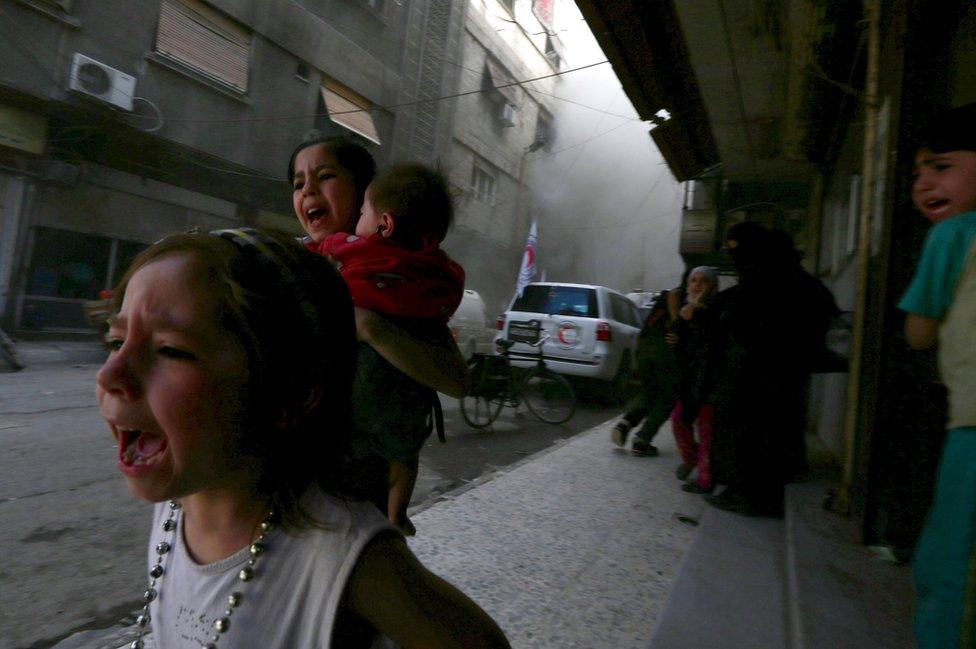
Bassam Khabieh took this picture while photographing the visit of a Syrian Arab Red Crescent convoy to the the Douma area of Damascus. While he was taking pictures, a shell exploded and killed a female volunteer and wounded others nearby.
"Every time the aid convoy arrived, children would gather around it, happy that they were going to be supplied with food and medicine. Before the shell landed on the convoy I was sitting on the pavement relaxing; the children gathered around me so I could photograph them.
"The children were terrified and began to scream and cry, especially when they saw a female volunteer covered with blood from a head injury.
"The challenge to portray this image was just like the challenges we face daily in time of war. I knew that there might be another shell falling within a matter of seconds, then one did exactly that a little further away.
"Do you want to protect yourself, like everyone else, by walking into a shop or home? Help carry the injured or be satisfied to take photos while others transfer them to ambulances? Do you want to calm screaming children? Or do you just want to cry because of what's happened?
"All these questions need answers in a matter of seconds before you can capture such an image. In this particular photograph, it was the first time I had seen how children's innocent laughter could turn into screams, fear and tears.
"It takes only a few seconds for life to turn to ashes and blood."

Mohamad Torokman in the West Bank
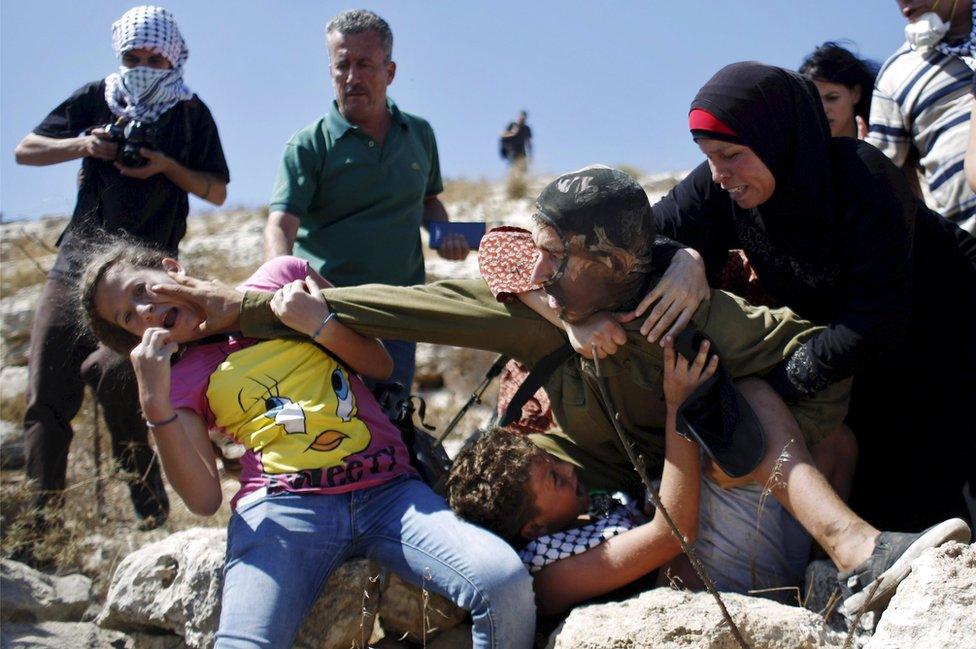
"It was about an hour after the start of a weekly protest against Jewish settlements in the West Bank village of Nabi Saleh, near Ramallah. Palestinians were scuffling with an Israeli soldier as they tried to prevent him from detaining a boy.
"The incident happened all of a sudden so I had to rush with my camera to capture this picture. The main challenge confronting me was that I should not miss any strong pictures from the scene. I was totally focusing on how to get this picture, without allowing myself to get distracted by anything else.
"As a photographer you have to be patient until you can capture the strongest image. On any assignment an hour, or even several hours, might go by without an opportunity to get a good picture but then a strong image can emerge all of a sudden. You have to be ready for the opportunity and be able to spot it - to capture the moment that best tells the story in front of you."

Beso Gulashvili on floods in Tbilisi, Georgia
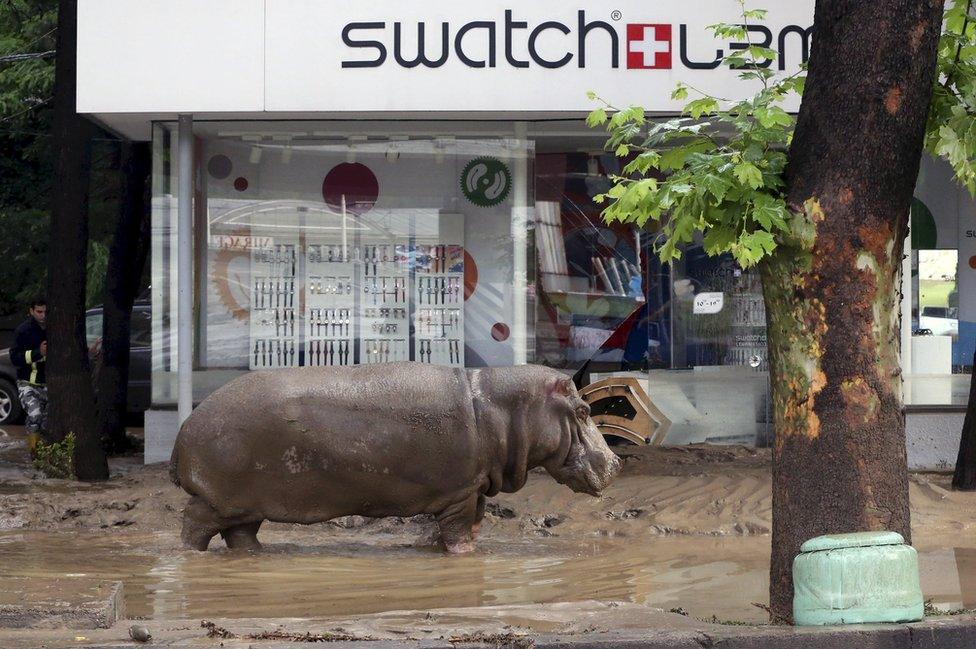
Heavy flooding in the Georgian capital, Tbilisi, killed at least 12 people and partly destroyed Tbilisi Zoo. Dozens of animals were killed while some tigers, lions, bears and wolves escaped to roam the streets.
"On that night the capital of Georgia was as I'd never seen it. Heavy rains had turned the Vere river that flows near the zoo and through Tbilisi into a torrent that washed away buildings, roads and cars. The enormous amount of mud and debris under my feet meant that making even a small movement was very difficult while shooting photos.
"My memory card was almost full so I had only a couple of shots left. I was smiling as I took this photo of Begi, as I discovered the hippopotamus was called. I had bought a watch for my 14-year-old daughter in that shop just two days before the flood. And here was a hippo in front of it. Today, Begi is arguably the world's most famous hippo."

Carlos Barria at the Iran nuclear talks in Vienna
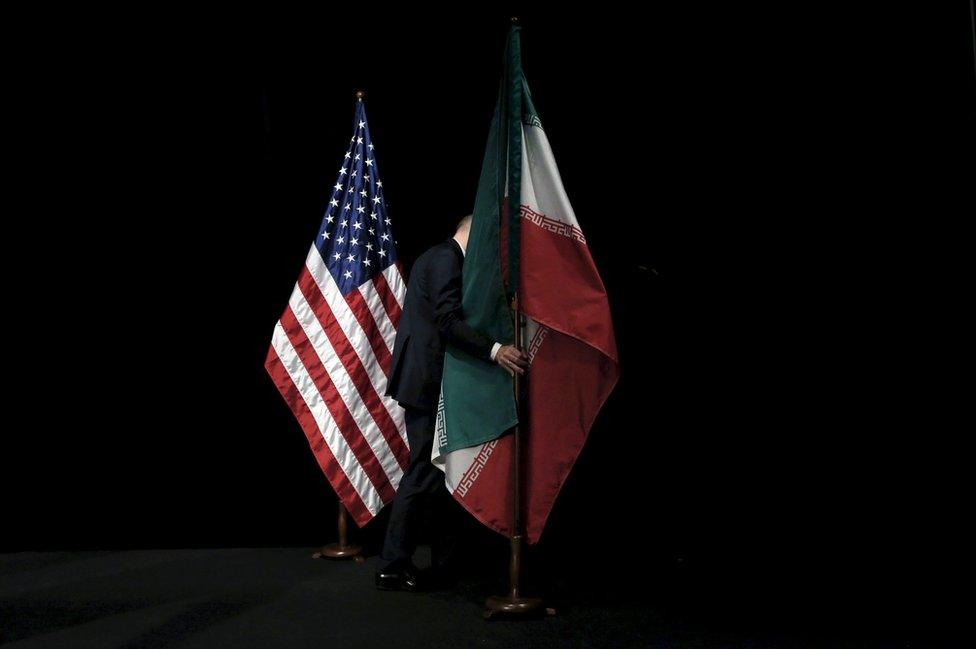
"For more than a decade, the United States and other world powers have participated in talks to reach an agreement on Iran's nuclear programme.
"The last chapter was in Vienna, where I travelled with US Secretary of State John Kerry. The media had virtually no access to the meetings, but could register for photo sprays of a minute or two per day. For 19 days I sat in a media tent near the hotel where the meetings were held, waiting.
"The biggest challenge in such tightly controlled environments is to capture a different picture every day. Not least as it was exactly the same situation each time: people sitting around a table talking.
"As the ceremony ended and colleagues rushed to file their images and stories, I decided to stay on. A few seconds after the country representatives left the stage, a staff member showed up to remove the countries' flags. I ran to the front of the now empty room and waited for the last two flags to be removed. The man took hold of the Iranian flag and walked past the US flag.
"That was what I had been waiting for, beyond the spotlight, unscripted. When I realised that I was alone, I also knew I had an important picture that no-one else had. The lesson: be the first to arrive and the last to leave."
